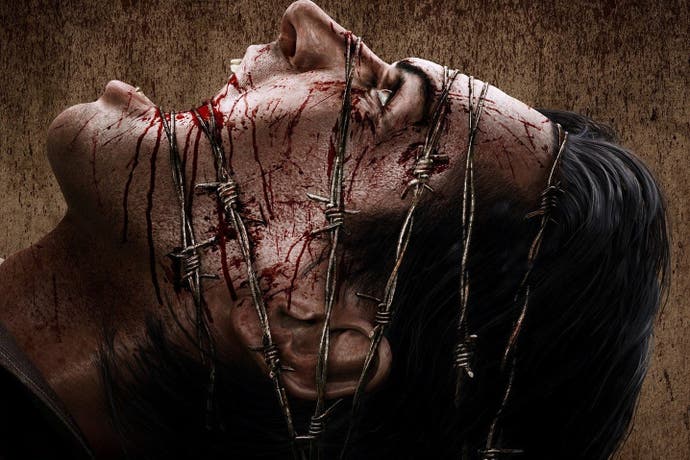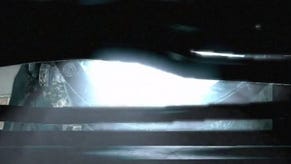Performance Analysis: The Evil Within
Digital Foundry's initial PS4 and Xbox One findings.
After a day of initial work, we're able to reveal some preliminary findings on the console versions of Tango Gameworks' The Evil Within. It's a curious title in many ways - possessing a distinct Japanese flair, yet built around a distinctly American rendering engine: id Tech 5. Designed from the ground up for hard-wired 60fps gameplay, the implementation of id software's technology intrigues still further bearing in mind that The Evil Within targets a locked 30fps update - a state of affairs that extends to the default setup of the PC version. We're still looking at the console and computer builds, but initial results throw up some interesting discussion points.
Resolution is the first order of business: the developer opts for an extra-wide aspect ratio, presumably in order to reduce the games' rendering load - though HUD elements are displayed in this region. Based on what's rendered inside the letterbox, however, we're left with a 1920x768 resolution on PlayStation 4 and a meagre 1600x640 on Xbox One. In effect, it's the now-familiar 1080p vs 900p set-up here, but the intrusive borders serve to cut-down actual rendering resolution significantly. Only 71 per cent of the screen's real estate is actually used for gameplay - and the aspect ratio utilised is actually a higher 2.5:1 rather than the 'cinematic' 2.35:1.
On the PC side, there is a console command that enables players to remove the bars but, at the time of writing, this only serves to crop the left and right of the screen producing an even more zoomed-in image. The field of view is already very narrow as it is, so this makes the game nearly unplayable. Of course, let's not forget that Mikami and crew took this very same approach back in 2005 with Resident Evil 4 which used a 16:9 aspect ratio within a 4:3 resolution, effectively operating at 640x360 but in that case, the game used a much wider field of view that made it feel less cramped.
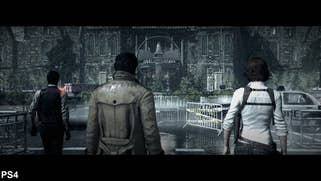



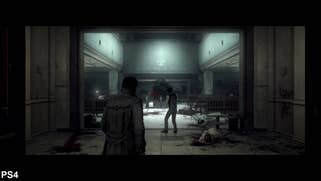
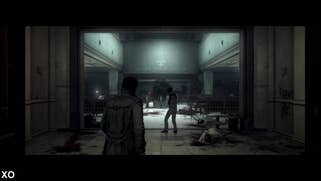
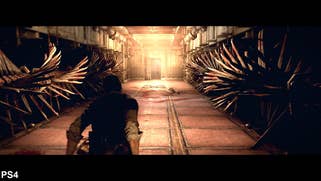
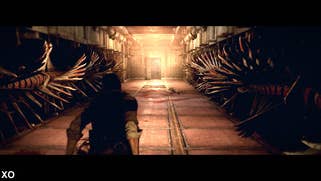
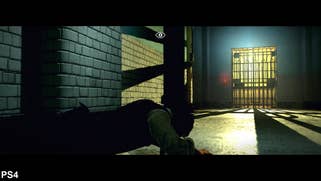
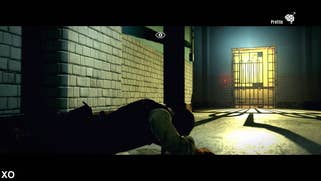
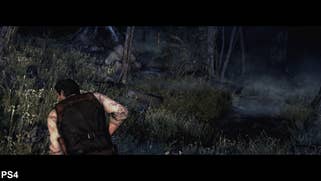

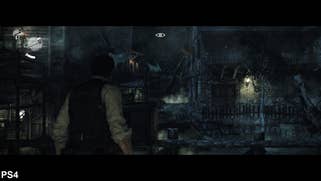
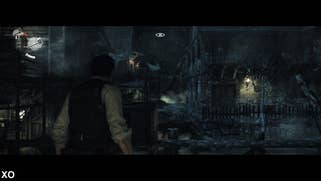
However, the main concern here is frame-rate - and first impressions are not great. The very first scene in which the player is given control is an appropriately foreboding moment, not just in terms of horror but also performance. Neither version manages to run consistently and the narrow field of view combined with jittery camera motion only serve to exacerbate the issue. The closest analogue would have to be the original console release of Resident Evil 6, where the camera feels much too close to the player while the frame-rate regularly dips below 30fps.
How far does it go? Unfortunately nearly every major sequence, particularly outdoors, is fraught with dips that interrupt the action, resulting in a jarring, jerky experience. Scenes not unlike Resident Evil 4's seminal village sequence see dips into the low 20s. The tight camera work and unsteady frame-rate lead to some incredibly off-putting moments. Thankfully, when the game does return to more enclosed tunnels the frame-rate tends to jump back to a more steady 30fps but, more often than not, the experience feels choppy and inconsistent.
What's worse, on Xbox One, it almost feels as if the renderer is out of sync with the game simulation. These particular issues don't appear in the performance metrics yet the issue is very much present. As a result, even when the game is rendering out 30fps, it sometimes feels worse than it should. To illustrate the issue, right-click, save as, and download this Xbox One clip, and compare it with this matched PlayStation 4 clip. Both games are rendering at a locked 30fps, but something's clearly very wrong with the Xbox One build. Looking at the numbers alone suggests that both versions produce similar performance metrics with some scenes even operating a touch smoother on Xbox One but, in practice, the Microsoft version feels worse, but ultimately, neither version feels particularly smooth during normal gameplay.
As it stands the results aren't looking great for either console but the PS4 version takes the lead for the moment with its higher resolution and smoother update when running at 30fps. It is odd that certain scenes do operate with a slight advantage on Xbox One, however, and we'll have to play further to see how the game trends in later sections. Anyone sensitive to frame-rate issues is going to have an issue playing this game and should probably go for the PC version provided one has the specs to handle it.
If you're alarmed about buying the PC game based on Bethesda's alarmingly high recommended specs, at least we have some good news there. A 4GB graphics card doesn't seem to be required at all for 1080p gameplay, and we've run the game just fine on the mid-range GTX 760, while even the entry-level enthusiast GTX 750 Ti offers console-style frame-rates at 1080p on max settings. As for hitting a consistent 60fps - well, it's here that the unoptimised nature of the PC port becomes apparent: we'll have more on that in a later update.
